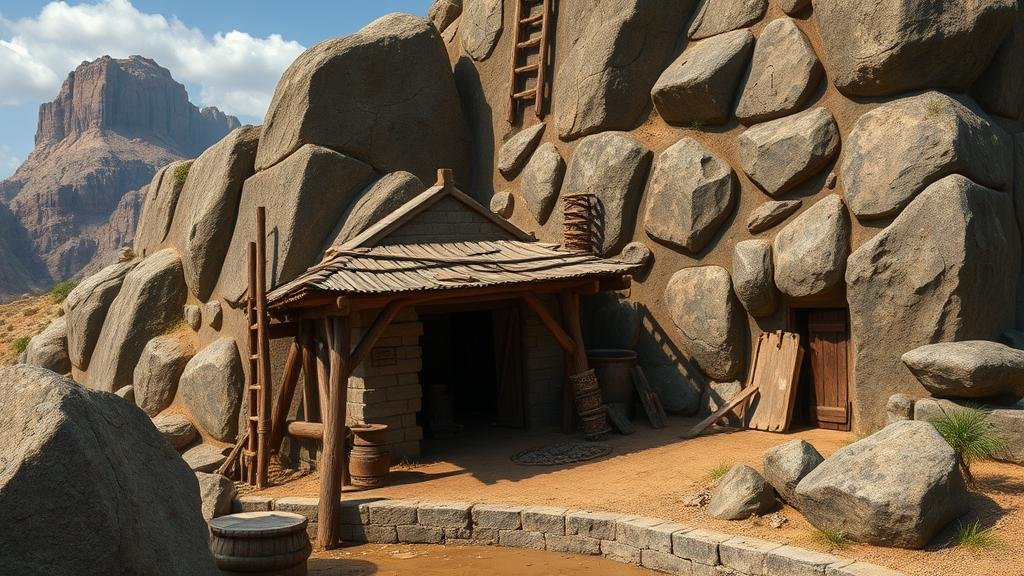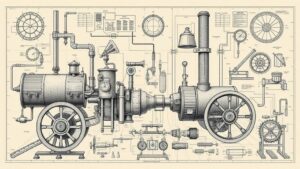Mining Early Mining Boom Town Records for Hidden Relic Clues
Mining Early Mining Boom Town Records for Hidden Relic Clues
The exploration of early mining boom towns in the United States presents a unique opportunity to uncover hidden relics that provide insights into the socio-economic and cultural dynamics of the times. This article delves into the significance of mining boom town records and how they can be mined for hidden relic clues, focusing on methods, historical implications, and practical applications in both historical and archaeological contexts.
The Historical Context of Mining Boom Towns
During the mid-19th century, particularly from 1848 to 1896, the California Gold Rush and subsequent mining rushes in regions such as Colorado, Nevada, and Alaska spurred the rapid development of boom towns. Notable examples include San Francisco, which grew from a small settlement in 1846 into a bustling metropolis with over 300,000 residents by 1870, driven largely by the influx of prospectors and fortune-seekers.
These towns often experienced a cycle of rapid growth followed by eventual decline, leading to what is now referred to as ghost towns. The rise and fall of these communities are documented in various records, including land deeds, mining claims, census data, and newspaper archives.
Mining Records as Vantage Points
Mining records serve as valuable resources for researchers. encompass a range of documents such as:
- Mining claim records
- Business licenses
- Census data
- Local newspapers
These records provide concrete examples of the economic activities, demographics, and social structures of boom towns. For example, the United States Geological Survey (USGS) provides detailed reports on mineral deposits and mining activities that can be cross-referenced with historical data to identify specific locations likely to yield hidden relics.
Methodologies for Relic Discovery
Mining historical records involves a combination of archival research, geological surveys, and archaeological fieldwork. Researchers can follow a systematic approach:
- Identify Target Areas: Use historical maps and mining claim records to select locations with significant mining activity.
- Contextual Research: Cross-reference local newspapers from the period to understand social events and mining-related tragedies.
- Field Surveys: Conduct field surveys using tools such as metal detectors and GPS technology to locate physical relics.
For example, the discovery of mining tools and everyday items in the remains of the Virginia City boom town in Nevada has provided substantial insights into the daily lives of miners and their families during the silver rush, adding depth to our understanding of this era.
Impact on Archaeological Understanding
Analyzing relics from mining boom towns contributes to a broader understanding of the impact of the mining industry on American society. Artifacts such as mining equipment, cooking utensils, and personal items reflect the occupational hazards and the social life of the miners. Excavations in areas like Bodie, California–a former gold rush town–have unearthed thousands of artifacts that offer a glimpse into the complexities of life during a time dominated by the pursuit of wealth.
The Role of Technology in Identifying Hidden Clues
Recent advancements in technology have revolutionized the ability to analyze historical records and archaeological findings. Geographic Information Systems (GIS) allow researchers to map historical data against current landscapes, revealing potential mining sites, while advancements in remote sensing technology help locate buried relics that traditional methods may overlook.
For example, a study utilizing GIS to analyze the spatial distribution of claims in the Black Hills of South Dakota uncovered previously unknown affluent camps, which had remained hidden due to modern development and land use changes.
Practical Implications and Future Research Directions
The implications of enhancing our understanding of historical mining boom towns extend to tourism, education, and cultural heritage preservation. As local and regional governments look to boost economic development through heritage tourism, crafting narratives around mining histories can be a compelling draw for visitors.
Future research should consider interdisciplinary approaches, merging historical documentation with geological studies and modern technology. Plus, incorporating community input from descendant populations can enrich the narrative and ensure that underscored histories gain proper recognition.
Conclusion
Mining early mining boom town records for hidden relic clues is an essential pursuit that not only fosters a deeper understanding of past societies but also has significant contemporary relevance. By unveiling the tales encapsulated in these relics, researchers contribute to a more nuanced understanding of American history, spotlighting the intricate relationship between humanity and the resources it covets.
As exploration techniques evolve, continuous dedication to this field will yield ever more detailed insights and inspire future generations to appreciate the lessons of the past.



